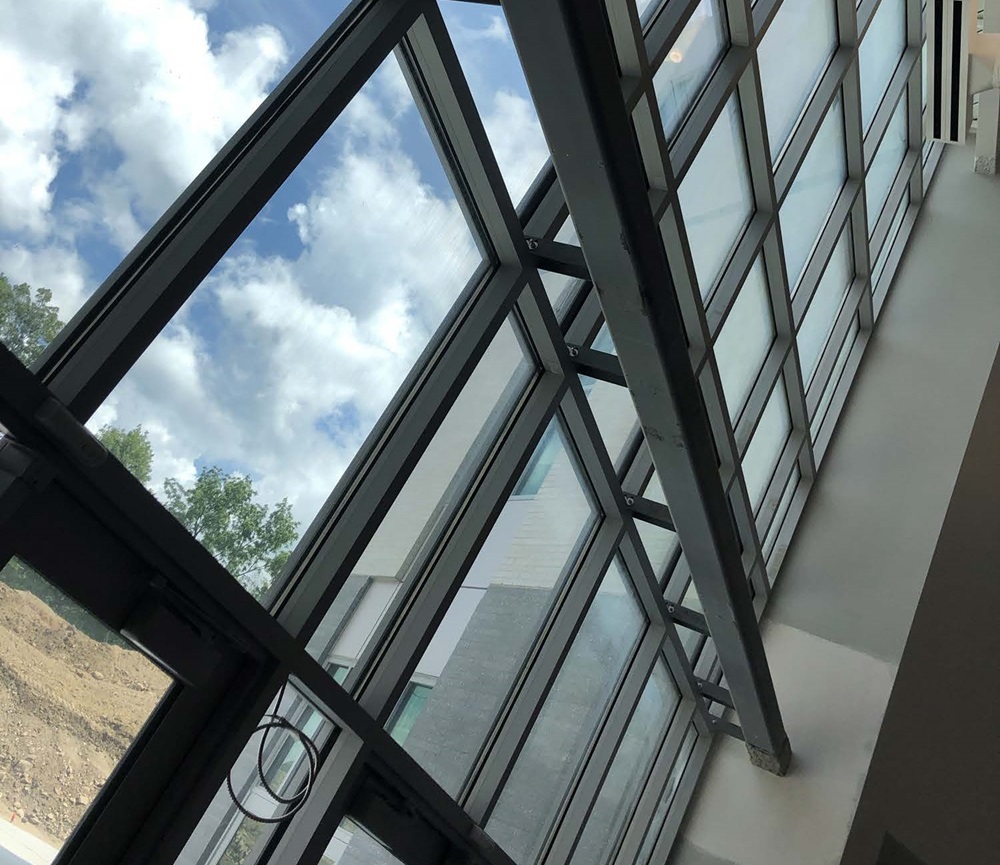If you are looking for the robust security of bulletproof windows for your facility, budget considerations can make it tempting to install the cheapest ballistic glass available. But, that could be a costly mistake.
Not all bulletproof glass can be used in exterior applications. Doing so could create either an unsightly visual effect like yellowing, or even damage the glass to the point where it loses its bullet-resistant rating.
In this article, we’ll talk about the difference between types of bulletproof windows, but if you have any specific questions you can contact us here. Your safety is our priority.
The Main Differences Between Interior and Exterior Bulletproof Windows
The most important difference between interior and exterior bulletproof windows are the products’ ability to withstand the elements. GCP and insulated glazing have glass caps that protect from damaging natural forces. Acrylic and polycarbonate do not. Therefore, acrylic and polycarbonate should only be used in interior spaces. Insulated and GCP glazing can be used in interiors or exteriors, however the air gap in an insulated glass unit means this product is typically used in exterior applications.
Ballistic glass that can withstand the elements is made of different materials using different manufacturing processes than bulletproof glass that is only suitable for indoor use.
In addition to weatherability, notable differences between interior and exterior bulletproof glass:
- Thermal properties
- Thickness
- Light transmission
- Bullet-resistance rating
- Cost
It’s important to note that these differences do not mean one product is “better” or “worse” than any other. What matters is that you have the bulletproof windows in place that meet your needs.
Types of Interior and Exterior Bulletproof Glass for Windows
Interior Bulletproof Windows
Acrylic and polycarbonate glazing are TSS’ indoor-only ballistic glass options. These are ideal glazing options for securing entryways, reception areas, and transaction windows
Acrylic is a very cost-effective interior option that has a high degree of light transmission and is resistant to yellowing. Acrylic bulletproof glass is available in UL 752 Levels 1 and 2.
Polycarbonate is also a cost-effective interior option, but the light transmission is slightly lower than acrylic and, over time, exposure to UV light can cause a yellowing discoloration (this does not affect the product’s ballistic rating). It is available in UL Levels 1, 2, and 3. This glass is thinner than acrylic, and also offers forced entry protection.
Exterior Bulletproof Windows
The two main options for exterior bulletproof glass are glass-clad polycarbonate glazing and insulated glass. These options are ideal for entry systems, storefronts, curtain walls, and more.
Glass-clad polycarbonate (GCP) is a versatile, high-performance material. It’s often a good solution for customized needs. It can be manufactured at UL Levels 1 through 8, it can be made to withstand explosive blasts, forced entry, and hurricane winds. However, standard GCP is typically only tested for ballistic protection. You can also choose custom glazing options such as tints and one-way mirrors. GCP’s complexity can make it a more expensive product, and high levels of protection require a more substantial barrier. As the thickness increases, the light transmissibility decreases.
Insulated glass offers a high protection rating, thinner pane, and highly-efficient thermal rating. Insulated glass is available in UL Levels 1 through 5. This can be a cost-saving benefit in areas with high temperature fluctuations, and for builders who prioritize efficiency and sustainability. Plus, all-glass insulated glass at UL Levels 1, 2, and 3 offer 90% light transmission for excellent clarity.
Retrofitting Bulletproof Exterior Windows Using Backglazing
Adding exterior bulletproof windows to your facility is not always a straightforward endeavor. Many historic structures have complex rules for renovations or changes; many contemporary structures have unique design features that would be difficult to replace with bulletproof glass. An optimal solution for these situations is backglazing.
Backglazing is a layer of bulletproof glass installed behind existing, non-rated glass. This sleek ballistic layer blends in with your current structure and retains the aesthetic appearance without compromising visibility, coloration, or compliance with local ordinances. Plus, because it’s not exposed to the elements, backglazing for exterior windows can be made with acrylic or polycarbonate bulletproof glass, giving you the benefits of these products that you wouldn’t normally get while securing an exterior window.
TSS is experienced in retrofitting ballistic protection in historic structures whose appearance or materials cannot be altered. These are often highly customized solutions due to the unique challenges that each site presents. To learn more about your options, contact our team of ballistic experts.
Call TSS For Help Choosing the Right Products for Your Facility
With so many options for interior and exterior bulletproof windows, choosing the right product may feel overwhelming. We don’t want you to end up with a product that doesn’t suit your needs or doesn’t provide the protection you expect. Our team of knowledgeable professionals is ready to guide you through your security upgrades.
Our team is ready to work with you to get an understanding of your needs and expectations and help you design a custom solution for ballistic protection. We can provide a detailed estimate based on your individual needs; to learn more about your bulletproof window options, or get a quote on specific types of bulletproof glass, just contact us.

